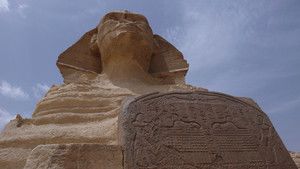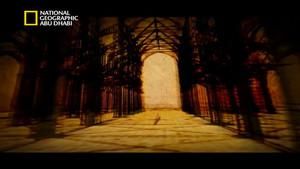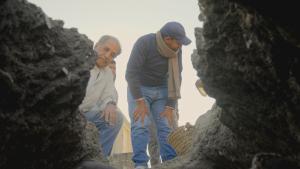- Middle East - English
Americas
Asia & Oceania
Middle East & Africa
Europe
SHOWS
SHOWS BY SUBJECT
DON'T MISS
 Ice Road Rescue Triple Jeopardy
wednesday 2 april 2025 at 7:00pm
Ice Road Rescue Triple Jeopardy
wednesday 2 april 2025 at 7:00pm
 Wild ArabiaOman
wednesday 2 april 2025 at 8:00pm
Wild ArabiaOman
wednesday 2 april 2025 at 8:00pm
 Running Wild with Bear GryllsEpisode 1
wednesday 2 april 2025 at 9:00pm
Running Wild with Bear GryllsEpisode 1
wednesday 2 april 2025 at 9:00pm
 Car S.O.SEpisode 9
wednesday 2 april 2025 at 10:00pm
Car S.O.SEpisode 9
wednesday 2 april 2025 at 10:00pm
 Restaurants at the End of the WorldEpisode 3
thursday 3 april 2025 at 7:00pm
Restaurants at the End of the WorldEpisode 3
thursday 3 april 2025 at 7:00pm
TOP SHOWS
VIDEOS
Most Viewed
The Hot Zone
Show: The Hot ZoneFight Science
Show: Fight ScienceSavage Kingdom
Show: Savage KingdomLive Free Or Die
Show: Live Free Or DieKatie’s New Face
Show: Katie’s New FaceWild Nordic
Show: Wild NordicEurope from Above
Show: Europe from AboveMaking the Wish: Disney’s Newest Cruise Ship
Show: Making the Wish: Disney’s Newest Cruise ShipThe Emirates From Above
Show: The Emirates From Above
PHOTOS
Photo of the day
![News9 Oklahoma City reporter Robin... [Photo of the day - 2 APRIL 2025]](https://assets-natgeotv.fnghub.com/POD/16208.ThumbL.jpg)
![Chris Hearn, Jennifer Hooper, and... [Photo of the day - 1 APRIL 2025]](https://assets-natgeotv.fnghub.com/POD/16206.ThumbL.jpg)
![Mark Peterson, Awkwafina, Yoon Hee... [Photo of the day - 31 MARCH 2025]](https://assets-natgeotv.fnghub.com/POD/16204.ThumbL.jpg)
31 MARCH 2025Mark Peterson, Awkwafina, Yoon Hee Lee, and Antoni...National Geographic/Seong Joon Cho
Most Viewed
Messerschmitt Kr200
Show: Car S.O.SAnthony Mackie
Show: Running Wild with Bear GryllsGhost Guns
Show: Trafficked With Mariana Van ZellerMurder in the Skies
Show: Air Crash InvestigationNazi Megastructures
Show: Nazi MegastructuresDeadly Waters
Show: Primal Survivor: Extreme African SafariFord Escort Mk1 Mexico
Show: Car S.O.S
TV LISTINGS

DESCRIPTION
Discover the Ancient Secrets behind the world’s most enduring – and infamous – structures, legends, and icons. Unearthing historical evidence and revealing new theories, the series features expert testimonials and dramatic recreations to separate the truth from the myth, while also painting a picture of the ancient lives that brought each of these fabled items into being.
From well-known mysteries like whose face adorns the great sphinx to lesser known stories such as an intriguing manifesto on witch hunting and a self-proclaimed Messiah killed by the Romans before Jesus’ birth.
EPISODE GUIDE
- Ancient Secrets: Secrets Of The Sphinx
- Ancient Secrets: Mystery Of The Silver PharoahDiscover more about the Silver Pharaoh and explore his tomb.
- Ancient Secrets: Mystery of The Silver PharaohDiscover more about the Silver Pharaoh and explore his tomb.
- Ancient Secrets: The SphinxForces of man and nature are threatening to destroy the Great Sphinx. To save it, scientists must unlock how and why it was originally built. Hallucinogenic dreams, human sacrifice, and solar alignments are but a few clues to solving the ancient riddles of the Sphinx, and rescue this wonder of the world.
- Ancient Secrets: China's Lost PyramidsSECRETS OF LOST PYRAMIDS is a journey to an astonishing place - China's "Valley of the Kings" - and back to an astonishing time - the world of the first emperors of China - to discover pyramid tombs of stupendous size, filled with astonishing riches in preparation for an afterlife beyond imagination. In 221 BC, China's First Emperor united warring kingdoms into a nation that still exists today. To memorialize his achievement, the First Emperor built a tomb like none ever seen in China - one of the biggest mortuary complexes ever built on earth. China's second dynasty, the Han, inherited a daunting challenge from the First Emperor. Thanks to the precedent of his enormous tomb, they had to build themselves mausoleums big enough to command respect and establish their right to rule. But they had to do so without bankrupting the national treasury and oppressing thousands of workers - which had led to the downfall of the First Emperor's Qin dynasty after his death. For eleven generations, Han emperors succeeded in building huge tombs and staying on the throne. Although no Han emperor's tomb has been opened, the tombs of lesser Han aristocrats have revealed astonishing things: complete underground palaces (including kitchens and toilets) and at least one corpse so amazingly well-preserved that some believe that Han tomb-builders knew how to "engineer immortality" by, among other things, wrapping tombs in layers of charcoal and clay to keep out water and air. But most tombs were robbed, leaving another dynasty hundreds of years later- the brilliant Tang - to lead a revolution in tomb design, tunneling simple shaft-tombs into natural mountains, and filling them with small and inexpensive grave goods that symbolized more than reproduced the perfect afterlife.
- Ancient Secrets: Cathedrals DecodedAn international team of experts investigates how Gothic Cathedrals were built, and why some of the tallest fell down
- Ancient Secrets: Cathederals DecodedAn international team of experts investigates how Gothic Cathedrals were built, and why some of the tallest fell down
ADVERTISEMENT
PHOTOS

Ancient Secrets
Ancient Secrets
- All Galleries
VIDEOS

Ancient Secrets
Ancient Secrets
(00:32)- All Videos
More On History











